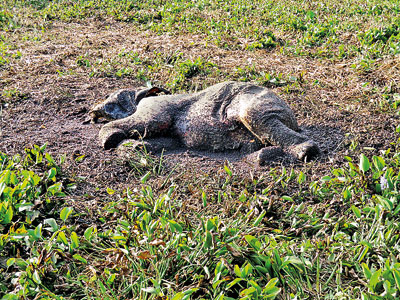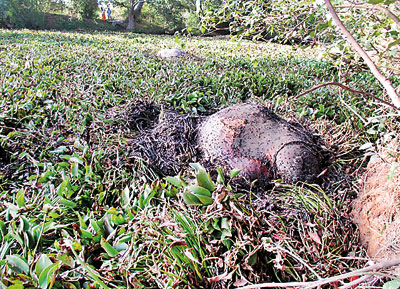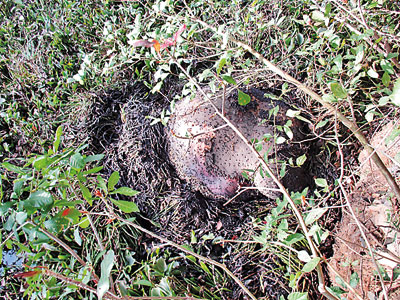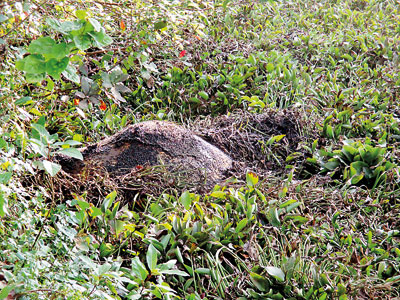News
Human hand set perfect trap for elephants
View(s):An anicut near Periyaru River (a branch of the Mahaweli) bordering a village at Polonnaruwa became a deathtrap for nine elephants that waded into the watery grave, deceived by a cover of water hyacinth, the Department of Wildlife Conservation said.
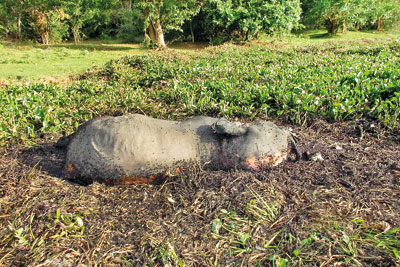
Tragic deaths: Five of the elephants that waded into a watery grave
Department of Wildlife Conservation Director-General M.G.C Suriyabandara said the elephants had died when they tried to walk across the anicut, which looked like a patch of grass as the area was heavily covered with water hyacinth, locally named “Japan jabara”, an invasive species of water plant. The anicut is12 feet deep.
If an elephant falls into a water body it can swim but this invasive water plant entangles the animal so it is unable to escape, he explained.
“If the same incident happened in a natural water body we would not interfere as those are natural ways that animals die, but this is not natural as they died in an area altered by humans,” he said.
The director in charge of wildlife health at the department, Dr. Tharaka Prasad, said postmortems on the animals had revealed that some had food in their digestive tracts and thus had died recently, but some had died three months ago.
There were bodies of calves along with those of female elephants aged 30-40 years.
The water hyacinth-filled growth can support the weight of smaller animals but cannot take the weight of 3,500-4,000kg elephants, Dr. Prasad said.
The drop in water levels in the area had transformed small water bodies into elephant traps with a top layer of plants, a middle layer of water and a bottom layer of mud into which the animals sink and are then pulled down further as they panic and struggle to get out.
Environmentalist Supun Lahiru Praksh from the Biodiversity Research Circle said the government should engage in proper environmental impact assessments in man-made water bodies such as anicuts on the borders of, or within, wildlife areas.
He said if development occurred without consideration of wild animals living in the area such incidents could occur repeatedly.
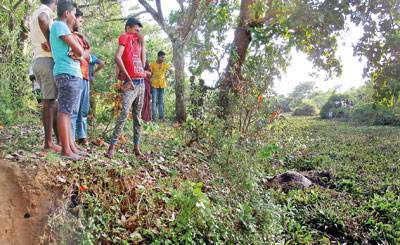
Villagers at the scene of the tragedy. Pix by Karu Gamage
